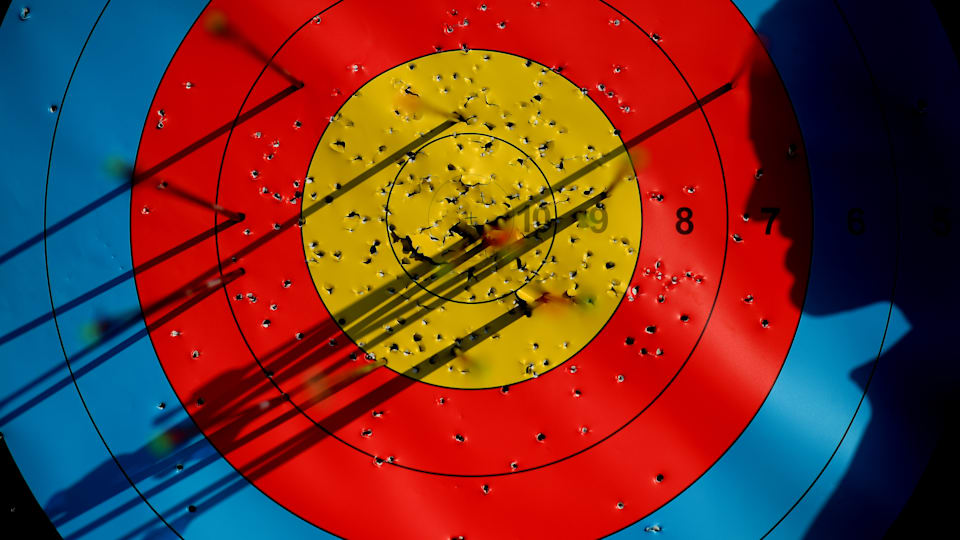
Archery is an ancient sport practised with a variety of bows and arrows. However, recurve and compound are two forms of archery used in standard competitions organised by World Archery.
Recurve archery and compound archery both get their names from the types of bows used by archers - recurve and compound.
While archers need to draw the arrow in both bow types, recurve bows have a simpler design and lack the complex pulley system and let-off feature present in compound bows.
Recurve and compound archery - history
Recurve is a traditional bowstyle used in competitions since World Archery was founded in 1931. Recurve has been the only archery discipline in the Olympics since archery returned to the big stage at the Munich 1972 Games after a 52-year hiatus.
Recurve archery events are also held at the Paralympic Games. Nearly all major tournaments organised or sanctioned by World Archery include recurve archery events.
Compound archery, meanwhile, was invented in the USA in the 1960s and was included in World Archery Championships for the first time in 1995. It has been part of the Archery World Cup since the inaugural edition in 2006 and is also a part of the World Games.
Major continental events, including the Asian Games, feature competitions in both compound and recurve archery. Barring the Olympics, all major archery events in the world feature the same number of medal events for both the recurve and compound disciplines.
Recurve and compound archery differences
Recurve vs compound archery - bows
Probably the biggest difference between the two forms of archery stems from the types of bows used.
The ends of a recurve bow at the upper limb and the lower limb curve away from the archers after curving inwards, hence the name ‘recurve’.
A recurve bow.
A recurve bow
The archers need to use their muscle strength to pull the bow string for a shot before releasing the arrow manually by relaxing their fingers. This archery form requires more technique and archers use an adjustable sight (pin/window) for taking aim before releasing the string.
A compound bow, on the other hand, has more bells and whistles. These feature pulleys, cables, a magnifying lens depending on archer’s preference along with a release switch. These add-ons contribute to more power and precision but make the compound bow a lot heavier.
A compound bow.
A compound bow
A compound bow’s pulley system, known as cams, allows for a let-off, reducing the holding weight at full draw. This feature enables archers to hold the bow steady and aim for longer periods without tiring their muscles.
Unlike recurve bows, the archers don’t need to hold the full draw weight while using a compound bow and use the release switch. The sight can also magnify the target and makes aiming easier.
Recurve vs compound archery - competition format and scoring
For recurve archery events, the target is set at a distance of 70m in standard competitions while in compound archery, the target is set 50m away from the archer.
Both recurve and compound archers aim at the five-colour target, consisting of 10 scoring zones in gold, red, blue, black and white rings.
The target face for recurve archers is 122 centimetres in diameter, with a 10-ring measuring 12.2 centimetres. The target face for compound archers is 80cm in diameter with the innermost 10-point ring being 8cm.
The archers in both disciplines shoot 72 arrows in the qualification phase and their scores determine the seedings for head-to-head contests.
In both compound and recurve archery, individual matches last for 15 arrows (three sets of five arrows each), mixed team matches last for 16 arrows (four sets of four arrows each) and team matches last for 24 arrows (four sets of six arrows each).
Archers score points for each arrow that hits the target - 10 for the innermost ring, 9 for the second innermost and henceforth. The outermost ring is worth 1 point.
Compound archery matches are decided on a cumulative score at the end. In case of a tie, the match goes into the tiebreak, which sees archers shoot additional arrows. The tiebreaker format in both recurve and compound competitions are the same.
In recurve archery, matches are decided through a set system, unlike cumulative scores like compound archery. After each set, the top scorer in that set receives two set points. If scores are level each archer/team gets one point.
The first to reach six set points in individual recurve competitions or five set points in team events is declared the winner. The tie-breaker sets in if scores are tied after all the sets of a match are over.
